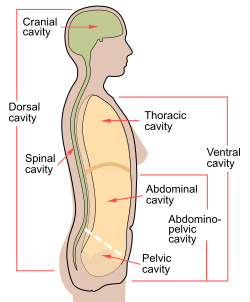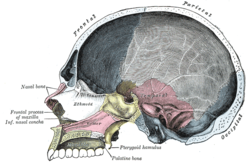[GROUP 1: Structure]
- The adult human cranial cavity has a capacity of 1,200-1,700cm.
- The cranial cavity consists of eight fused cranial bones: occipital, sphenoid, frontal, ethmoid, two parietal, and two temporal bones.
- The spaces between the meninges and the brain are filled with cerebrospinal fluid, enhancing brain protection.
- Facial bones are not included in the cranial cavity.
- The cranial cavity is lined by three meninges: pia mater, arachnoid mater, and dura mater.
[GROUP 2: Function]
- The cranial cavity houses the brain, meninges, and cerebrospinal fluid.
- The brain supplies information to the body and helps regulate bodily functions.
- The cranial cavity contains the pituitary gland, which secretes fluids important for bodily functions.
- Twelve cranial nerves control the cranial cavity, providing sensory information for smell, taste, hearing, and sight.
- The cranial cavity allows for functions like sleep and chewing.
[GROUP 3: Clinical significance]
- Traumatic brain injuries, such as concussions, can occur if the brain strikes the inside of the skull, leading to memory loss, headaches, and nausea.
- Infections in the cranial cavity can cause meningitis, a potentially fatal disease.
- It is recommended to seek medical attention after a head injury to assess potential damage to the brain.
[GROUP 4: Related concepts]
- Neurocranium
- Intracranial pressure
- Paranasal sinuses
[GROUP 5: References and external links]
- Turchin, Valentin. The Phenomenon of Science.
- Martini R, Ober W, Garrison C, Welch K, and Hutchings RT.2001. Fundamentals of Anatomy and Physiology, 5th ed. Prentice Hall, New Jersey. p. 195.
- Wikimedia Commons has media related to Cranial cavity.
- Anatomy of cranial cavity.
The cranial cavity, also known as intracranial space, is the space within the skull that accommodates the brain. The skull minus the mandible is called the cranium. The cavity is formed by eight cranial bones known as the neurocranium that in humans includes the skull cap and forms the protective case around the brain. The remainder of the skull is called the facial skeleton. Meninges are protective membranes that surround the brain to minimize damage to the brain in the case of head trauma. Meningitis is the inflammation of meninges caused by bacterial or viral infections.
| Cranial cavity | |
|---|---|
 Body cavities | |
 Cranial cavity | |
| Details | |
| Function | Contains and protects the brain |
| Identifiers | |
| Latin | cavitas cranii |
| TA98 | A01.1.00.048 A02.1.00.012 |
| TA2 | 100, 413 |
| FMA | 9644 |
| Anatomical terminology | |